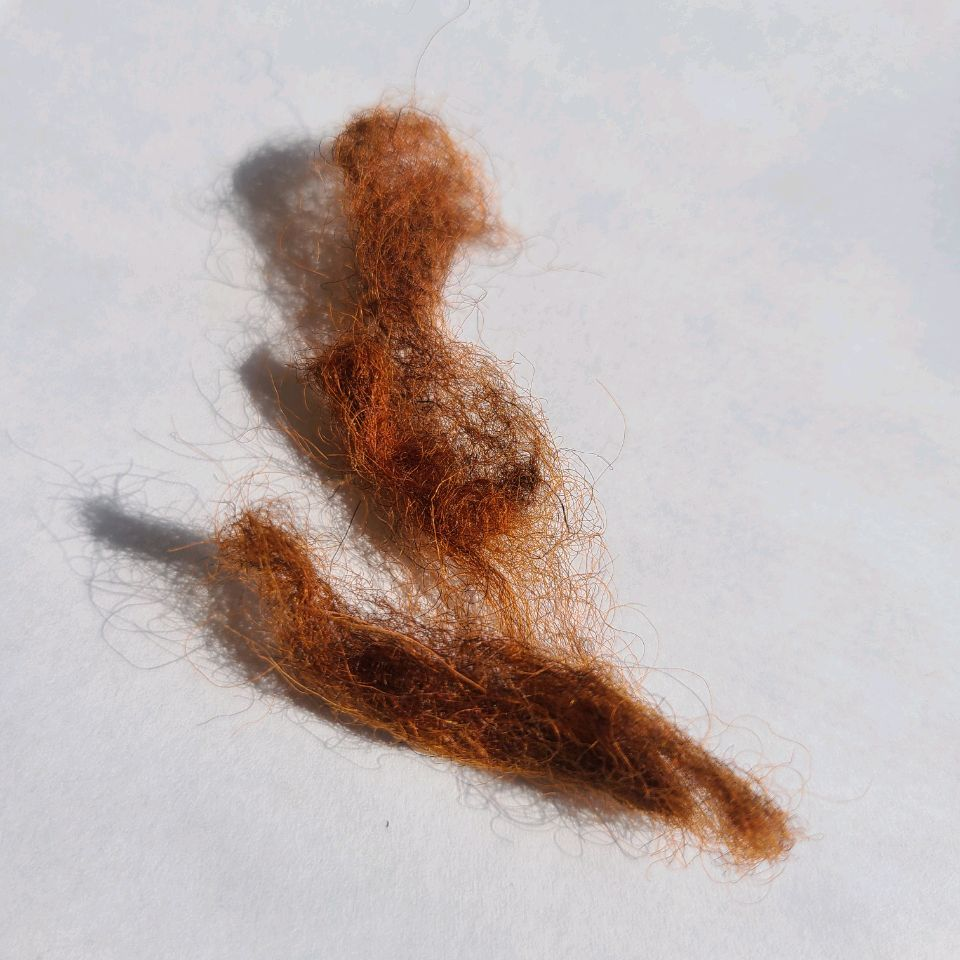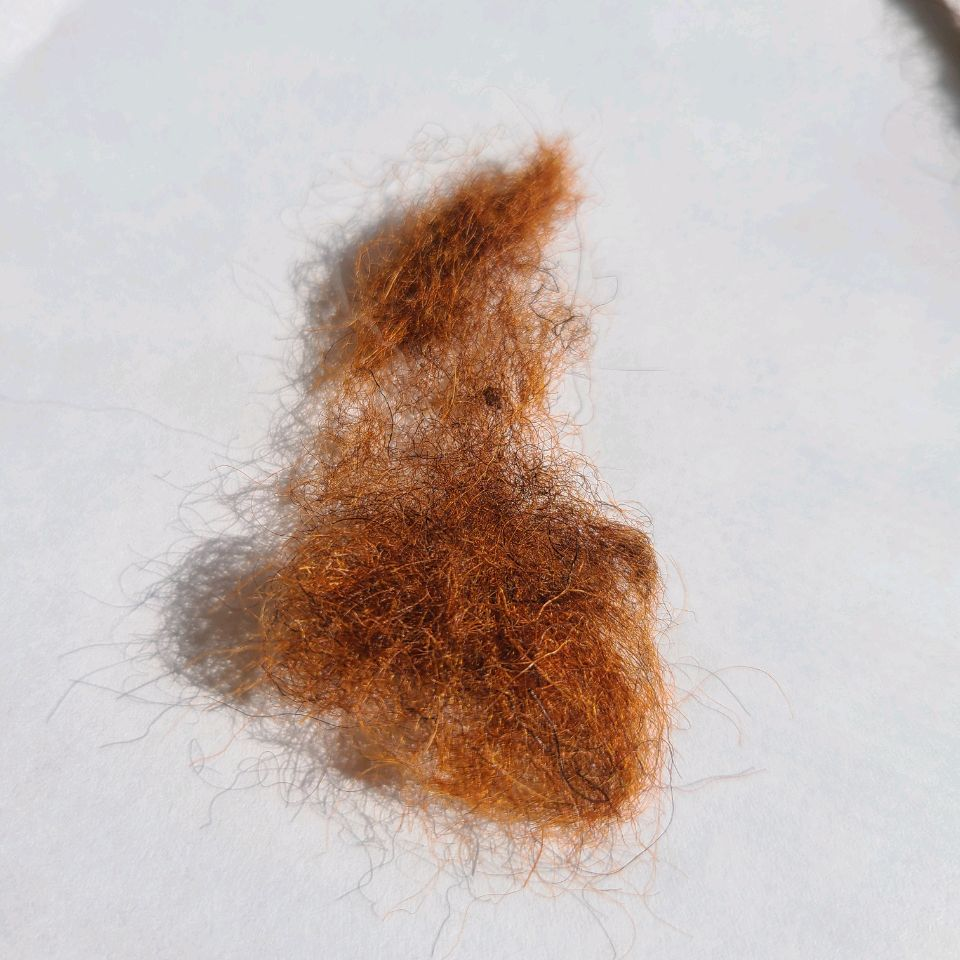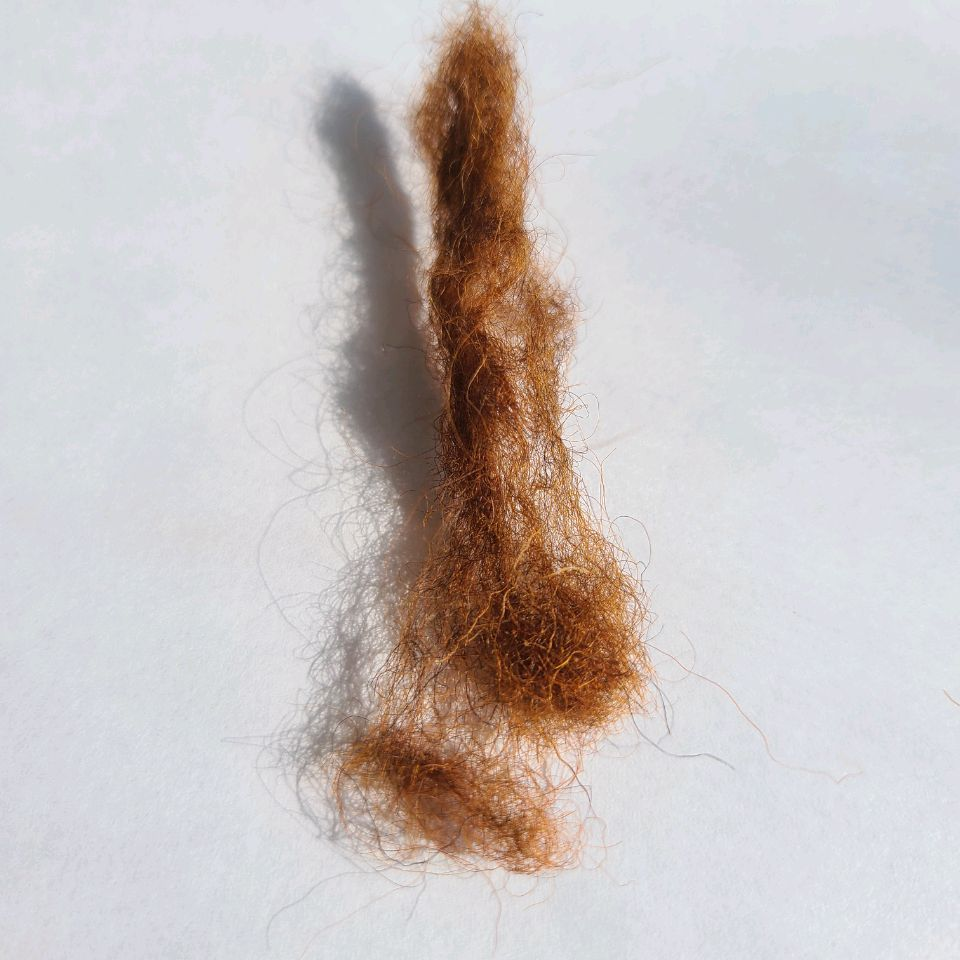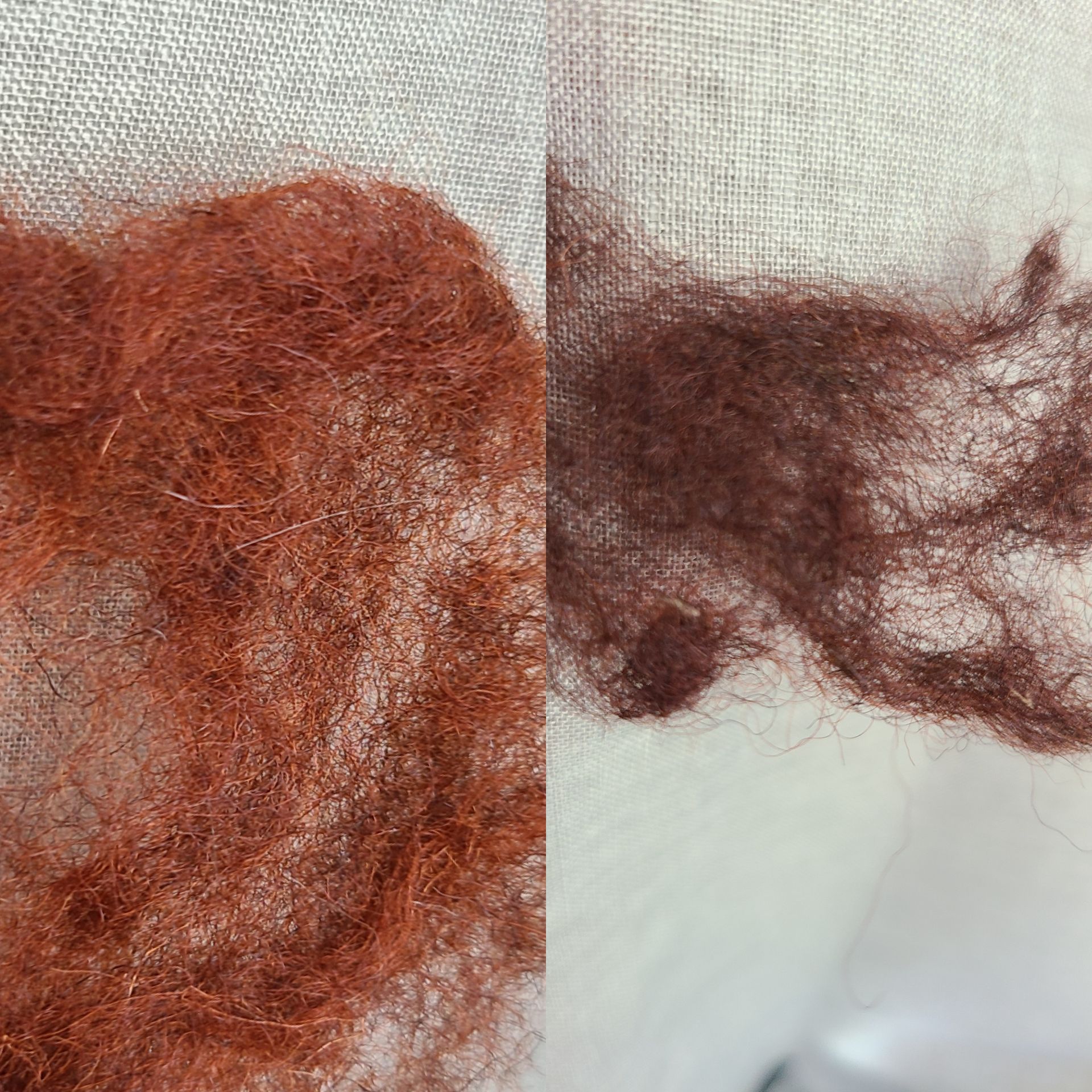
If you have hennaed your hair and aren’t a fan of the red, or if you just want to tone your hair down a bit, this blog may be for you. Even if you’ve done a combination of henna and indigo and/or cassia, you can still use indigo and cassia to tone.
What is toning?
If you’re familiar with “henna gloss” or “indigo gloss,” then you’re already familiar with the idea of toning. Toning is a way to alter your hair color from the current color. It’s called “toning” because you’re fine tuning your hair color by adding the missing pigment that will help you get the color that you’re looking for. People tone or do glosses for many reasons, but the biggest reason is because their hair may have come out brighter and/or lighter than expected.
Toning can also be beneficial if you’ve made a mistake in your mix, such as using too much henna, accidentally leaving indigo out your mix, or even correcting a mix where the indigo had demised.
Hair Prep
All of the mohair being used for testing has been prepped with a clarifying shampoo before applying henna. For Test 1, the indigo/cassia mix was applied the same day that the henna past was removed. For Test 2, the indigo/cassia mixes were applied 7 days after the henna paste was removed.
Mix Prep
In all cassia/indigo mixes, both Clarity cassia and Sudina indigo powders were mixed in the same bowl, and distilled water was added. The paste was applied to the hair samples immediately after mixing each set of powders.
Test 1 – Toning Henna before Oxidation

I used 20% indigo to 80% cassia on freshly hennaed hair that hadn’t oxidized for mix A. The goal was to see if the hair would be different than applying a toning mix to hair that has oxidized, mix B. I did notice a difference in the tone.
Note: Due to the lack of difference in color, I did not do a mix for 15 minutes when making mix B for this particular ratio.


Left: A 80% cassia/10% indigo pre-oxidized application
Right: B 75% cassia/10% indigo post-oxidized application

Left: A 80% cassia/10% indigo pre-oxidized application
Right: B 75% cassia/10% indigo post-oxidized application
When I compared these test pieces to hair that had been toned after letting the henna had oxidized, I noticed that even though that mix A, despite having more indigo and less cassia, didn’t come out darker than mix B. The test pieces that only had the mix on for 30 minutes are quite comparable (off camera, the pigment in mix A is slightly more brassy and doesn’t have as rich of a red as mix B for this timing).
There will be another blog in the future comparing more on toning freshly hennaed hair in detail, as this yielded interesting, yet unexpected results.
Test 2 – Toning Henna after Oxidation

Top left big chunk of hair is the control.
Mix 1
10% indigo; 90% cassia

30 minutes

60 minutes
Mix 2:
25% indigo; 75% cassia

30 minutes

60 minutes
Mix 3:
50% indigo; 50% cassia

15 minutes

30 minutes

60 minutes
Mix 4:
75% indigo; 25% cassia

15 minutes

30 minutes

60 minutes
Mix 5:
90% indigo; 10% cassia

15 minutes

30 minutes

60 minutes
There are a couple of strands that have similarities such as test pieces K and I as well as L and J.
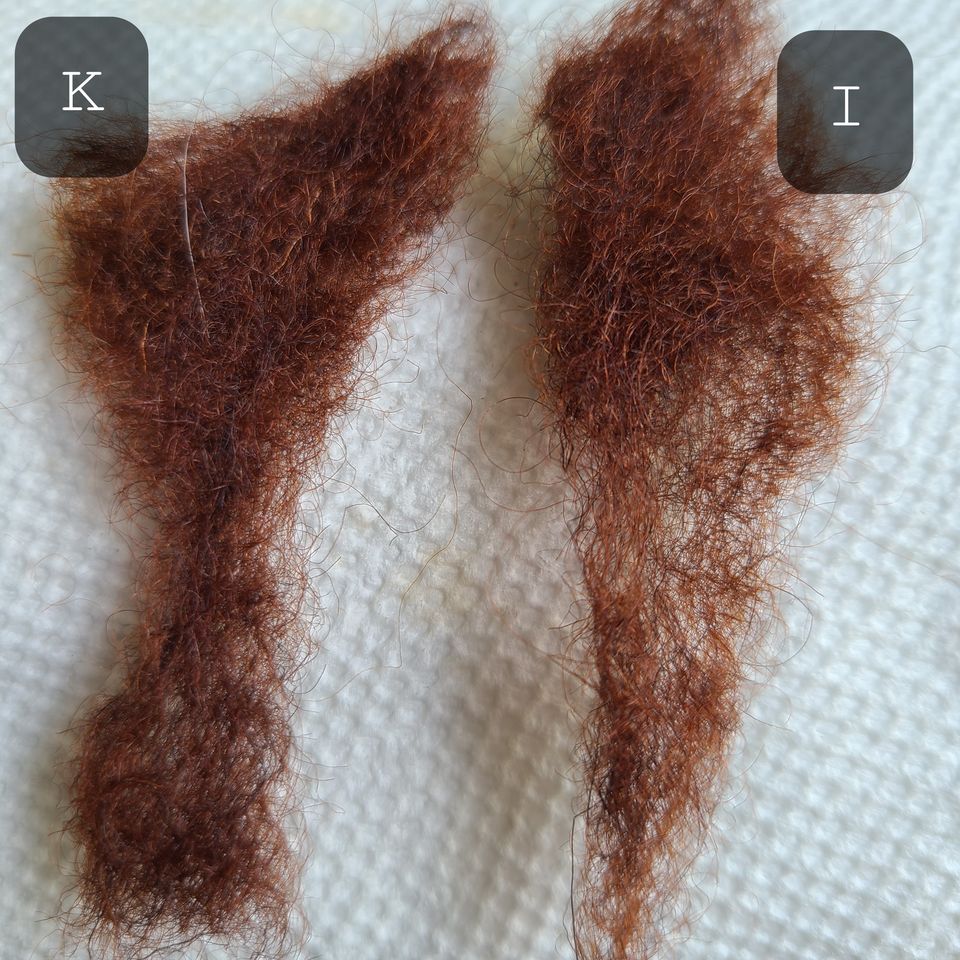
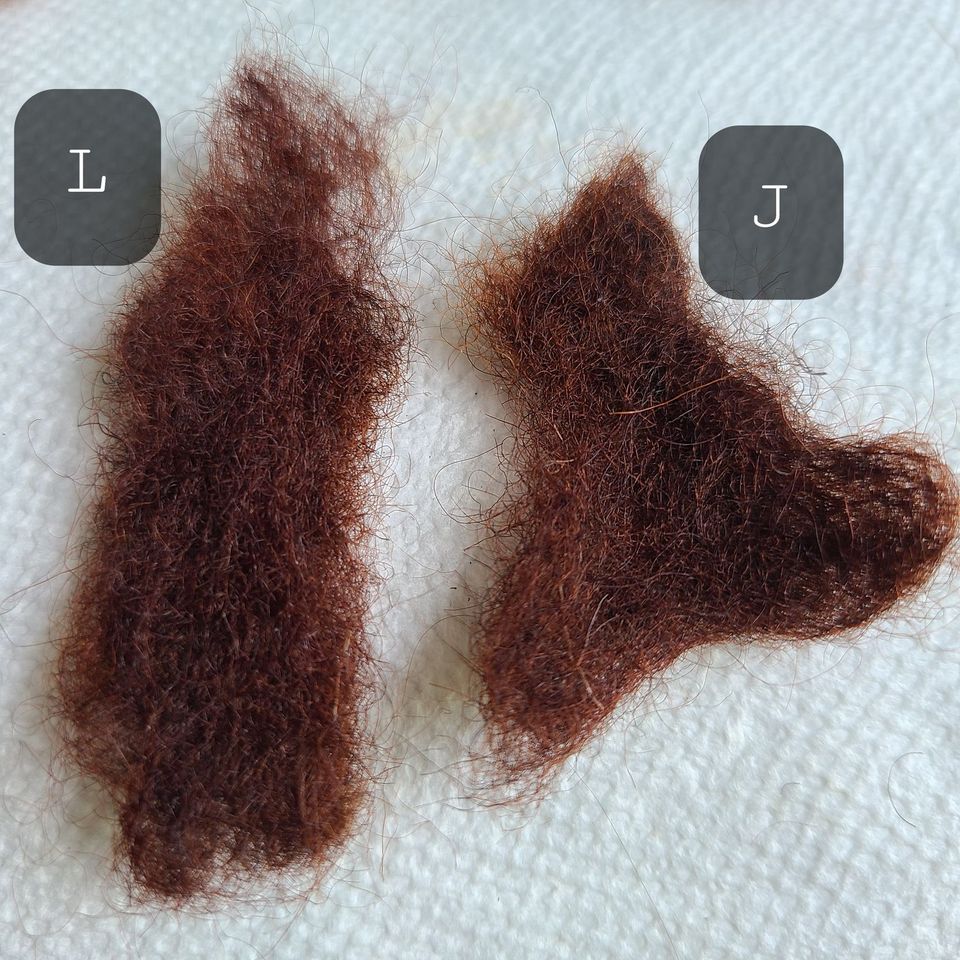
K is 90% indigo and 10% cassia that was left of for 15 minutes, where as I is 75% indigo and 25% cassia for 30 minutes.
L is 90% indigo and 10% cassia that was left on for 30 minutes, where as J is 75% indigo and 25% cassia for 60 minutes.
The benefit of having two mixes with different timing that have similar results is that if you take a long time to apply paste your hair, you can always start with the mix that is the longer time for the first part of the application, then switch to a mix that needs less time to process.
IE: If you’re trying to tone bright hennaed hair to a dark brunette, and it takes you a half an hour to do your root area, you could do mix I for the first part, then about half way through switch to mix K. This will allow for an even color.
If your hair continuously comes out more red than you’re looking for, you can definitely use a mix of indigo and cassia to tone it down to a darker shade. Customer service can help you determine the best ratio and timing for your hair! Testing is always a good idea to prevent your hair from going darker than you’re wanting.
For more information on Clarity cassia visit: http://www.hennaforhair.com/faq/Clarity_cassia-auriculata.pdf
 Maria • Ancient Sunrise Specialist • Licensed Cosmetologist
Maria • Ancient Sunrise Specialist • Licensed Cosmetologist






